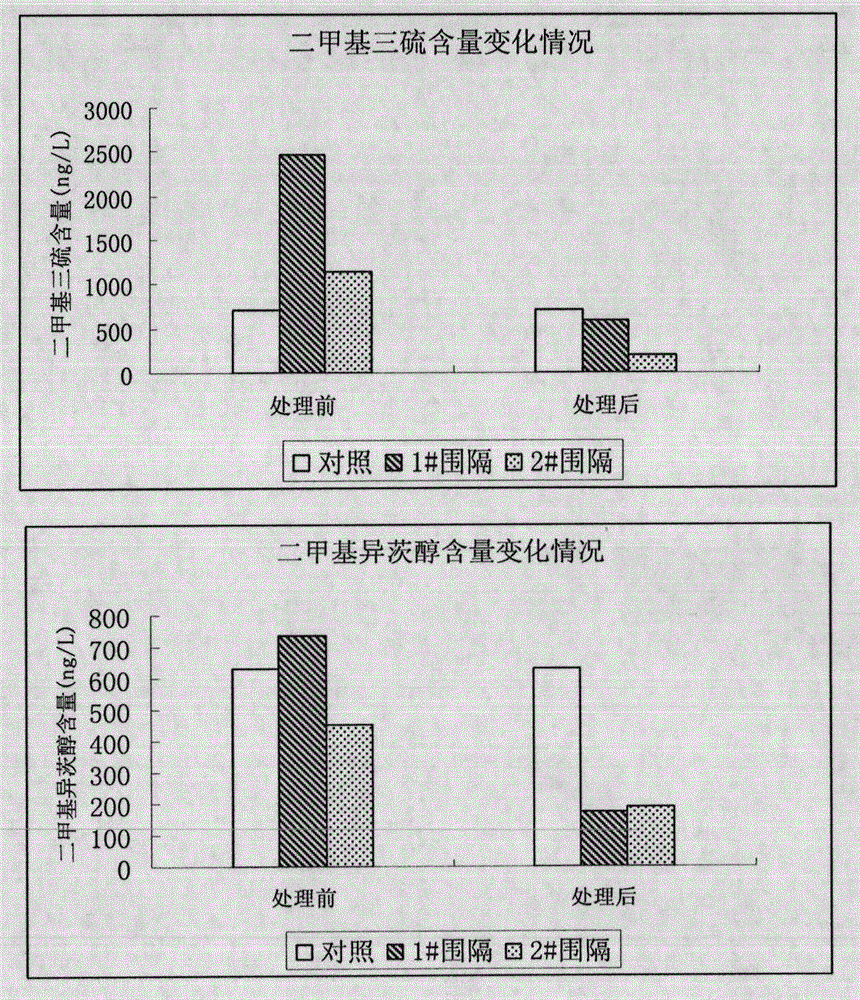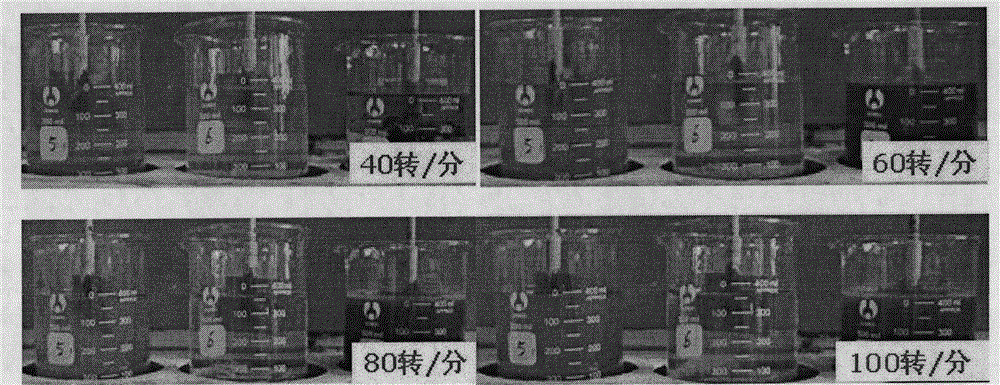A Method for Quickly Clearing Lake Flooding in Situ
A rapid and lake-flooding technology, applied in the field of water environmental pollution control, can solve the problems of being unable to remove colloidal and particulate pollutants at the same time, reducing the amount of phosphorus released from sediments, and taking a long time to recover, etc.
- Summary
- Abstract
- Description
- Claims
- Application Information
AI Technical Summary
Problems solved by technology
Method used
Image
Examples
Embodiment 1
[0019] Example 1 Experiment on the flocculation effect of natural polymer flocculants on "flooding lakes"
[0020]For the lake water taken from the "flooded lake" site of the trumpet mouth of Taihu Lake in Wuxi, 10mg / L chitosan (final concentration) was used to remove the suspended colloidal and particulate pollutants in the "flooded lake" water sample, and chitosan was added Stir immediately after sugaring for 20 minutes, the flocs settled, and the black water became clear. As shown in the figure, the water samples No. 5 and No. 6 were obviously clearer than the control water sample No. 1 after treatment, and the suspended black pollutants all turned into flocs. The solid settled to the bottom of the beaker.
Embodiment 2
[0021] Example 2 Experiment on the Effect of Nanobubbles on Removing "Flooded Lake" Dissolved Pollutants
[0022] For the on-site lake water of the trumpet mouth of Taihu Lake in Wuxi, the colloidal and particulate pollutants in the No. Sieve the clean soil along the Shiba Bay of Taihu Lake in Wuxi, make it into a suspension with clean water, expose the suspension to ozone for 30 minutes with an ozone generator, then ultrasonically for 3 minutes, and then spray the soil solution loaded with ozone nanobubbles on the In the enclosure of the floodplain area, the content changes of the dissolved pollutants dimethyl trisulfide and dimethyl isobutyl alcohol in the floodplain area before and after spraying are as follows: figure 2 As shown, the content of pollutants has decreased significantly, the removal rate of dimethyl trisulfide is greater than 75%, and the removal rate of dimethyl isobutyritol is greater than 58%.
Embodiment 3
[0023] Example 3 Natural sand inhibits resuspension effect experiment
[0024] Select the clean soil along the Shibawan coast of Wuxi Taihu Lake and the shore sand of the Yantai coast of the Yellow Sea as covering materials, dry it naturally under the sun, then crush and grind it, and pass it through a 180-mesh sieve for future use. For the lake water at the scene of flooding the lake, first flocculate the colloidal and particulate pollutants in the sedimentation water sample as described in Example 1, and then remove the dissolved pollutants in the water sample as in Example 2, and leave it for 1h After that, cover the black flocs of No. 5 and No. 6 water samples with soil and sand respectively, and spread evenly, so that the spreading thickness of the material reaches 1cm, while the black flocs of the control water samples are not covered with any material, and left to stand. After 1h, the supernatant was clarified, and then the supernatants of No. 5, No. 6 and control sampl...
PUM
| Property | Measurement | Unit |
|---|---|---|
| clearance rate | aaaaa | aaaaa |
Abstract
Description
Claims
Application Information
 Login to View More
Login to View More - R&D
- Intellectual Property
- Life Sciences
- Materials
- Tech Scout
- Unparalleled Data Quality
- Higher Quality Content
- 60% Fewer Hallucinations
Browse by: Latest US Patents, China's latest patents, Technical Efficacy Thesaurus, Application Domain, Technology Topic, Popular Technical Reports.
© 2025 PatSnap. All rights reserved.Legal|Privacy policy|Modern Slavery Act Transparency Statement|Sitemap|About US| Contact US: help@patsnap.com



